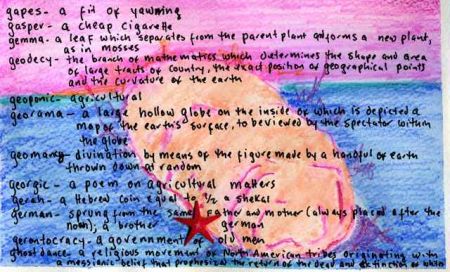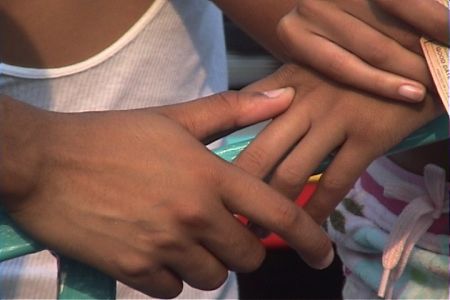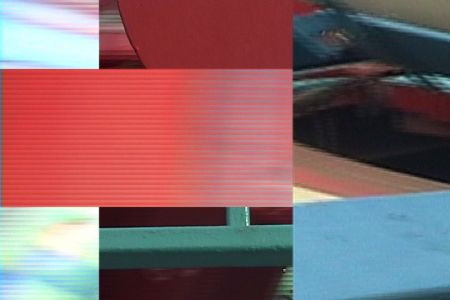Image of a woman in a Yashmak at a shop on Atlantic Avenue in Brooklyn.
Brooklyn
Foudryoant: Images from Abecedarium:NYC video
Umbel: Shadows
It’s interesting to me that “umbel” comes from the Latin root “umbra,” meaning shadow. Umbel, then, describes not the flower itself, or even the shape of the flower, but rather the effect the flower has on its surroundings. Perhaps the word was chosen by an ant, relaxing in the shade of one such plant.
List of G words from 1968 Dictionary
Here is a list of words beginning with G from a forty year old dictionary I pored over during a residency at the MacDowell Colony. It was fascinating and disconcerting to discover how many amazing words have now disappeared not only from our usage but also from this etymological archive. Gone. We chose georgic — which sent me to a community garden in Brooklyn to reflect on agriculture in the city.
Welkin: The Sky Opens Up on a Brooklyn Street
As I turn the corner from Smith Street onto my short block in Brooklyn on a late winter afternoon just a few months after moving to the neighborhood, I notice that the sky somehow seems very different here. To my left and right the buildings take a few steps backwards, like cancan dancers on a stage, kicking their legs with lifted arms. After discovering the almost obsolete welkin, I know there is a single word I can use to describe this celestial beckoning.
Pelagic in a Junot Diaz short story
Pelagic took on new, transcendent meaning for me today when I read “Alma” a short story by Junot Diaz. The narrator of the story is in love with a girl but can’t resist the seductions of her best friend. When his girlfriend confirms her suspicions by peaking into his journal and then quietly confronts him, his “heart plunges, … and he is overwhelmed by a pelagic sadness.”
Nosogeography: Newtown Creek, Greenpoint, Brooklyn
Nosogeography is not a happy word. I’ve been trying to avoid shooting video for this word for weeks, not knowing when I would be able to face the daunting reality of filming a neighborhood where disease or the rumor of disease floats invisibly and silently through the air and the water. I have decided to focus on the largest environmental disaster in the history of New York City, the accidental spilling of 22 million gallons to oil in the Newton Creeek, a small waterway which serves as the dividing line between Brooklyn and Queens. By chance, I meet another experimental filmmaker, Scott Nyerges, who lives in Greenpoint, the closest residential neighborhood to the site of the spill. We agree to take a field trip to photograph . As we stand along the smelly, filth banks of the Newtown Creek, Scott recounts the daunting environmental disaster that occurred here in 1950 and is just beginning to be cleaned up.
Foudroyant: Coney Island, Brooklyn
From the first moment that I heard about the imminent closing of Brooklyn’s Coney Island, I knew that this dinosaur of amusement parks would have to become a part of our artistic exploration of New York City. With my husband, filmmaker Mark Street, I take my two daughters for an evening of old-fashioned spinning, twisting and topsy-turvy merry-making Coney Island style. With the notion of capturing a foudroyant sensation with my camera, I point my lens at the explosive visual activity happening around me. I think about the desire we all have to share in this other-worldly, anti-gravity sense of being absolutely out of control.
Audile: Rainbow Playground, Brooklyn, NY
“Parks Commissioner Robert Moses (1888-1981) first proposed this playground in February 1954. In a letter to the Board of Estimate, he requested the assignment to Parks of “the entire easterly frontage of Sixth Avenue between 55th and 56th Street.” According to the letter, “this parcel is the only vacant area in a densely built-up community in [this] section of Brooklyn and the nearest recreational facilities are over half a mile away.” The Board of Estimate assigned the property to Parks a month later and it became the 56th Street Park In the 1970s, in an effort to revive the deteriorating park, Community Board 7 and other local residents formed the Friends of the 56th Street Park. The group organized a cleanup, initiated supervised play, and banished undesirable elements, all in the hopes of making their park more enjoyable. The organization sponsored a contest to rename the park and “Rainbow Playground” won. A 1984 Local Law formally named it.”
- The Daily Plant. Volume XVIII, Number 3868. Wednesday, May 21, 2003. http://www.nycgovparks.org/sub_newsroom/daily_plants/daily_plant_main.php?id=16879
Elutriate: Carroll Gardens and Marine Park, Brooklyn
Thinking about the word elutriate in its urban manifestation forces me to reflect in new ways about the awkward intimacy of cleaning our clothes in public. There is an old-fashioned, down-by-the-riverside quality of experience that comes with bringing your clothes to a public place in order to clean them. Some people relish the opportunity to talk to strangers while others turn deeply and painfully into themselves.
I’ve been darting into laundry mats all over Brooklyn snapping pictures. Quick is the key word here, as for some reason not one storefront laundry owner has been even the slightest bit welcoming when it comes to taking pictures in their business. I am not sure if they are worried that I might be from the NYC Department of Health or if they are just camera shy. After one too many evictions, I decided to bring my ten year-old daughter along, and things began to proceed a bit more congenially.



